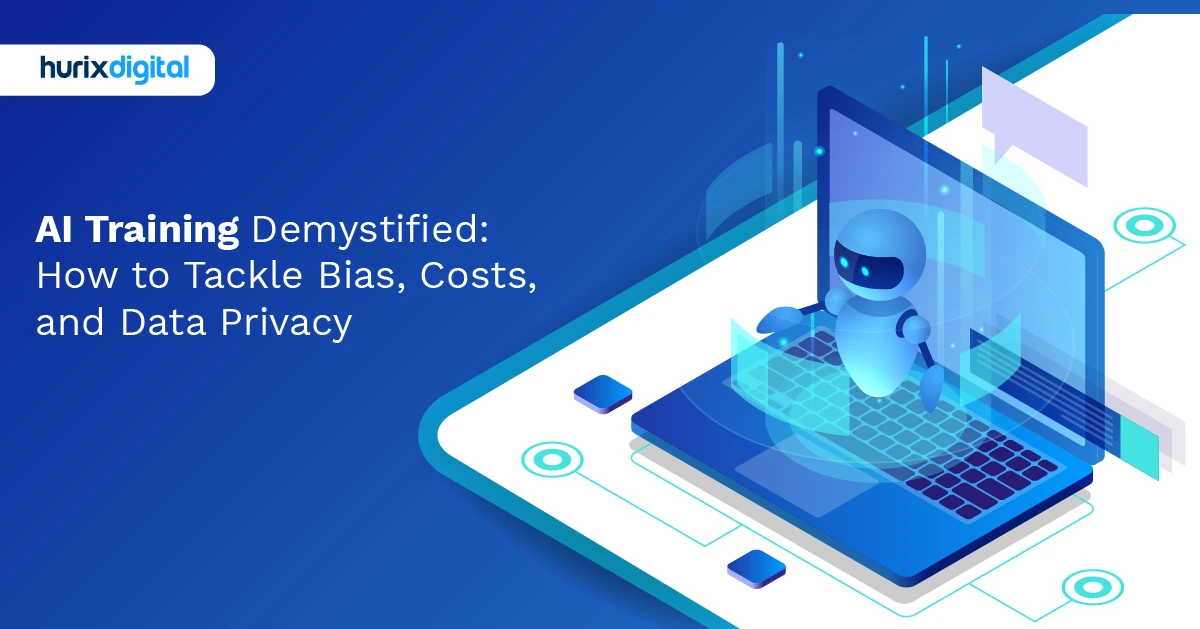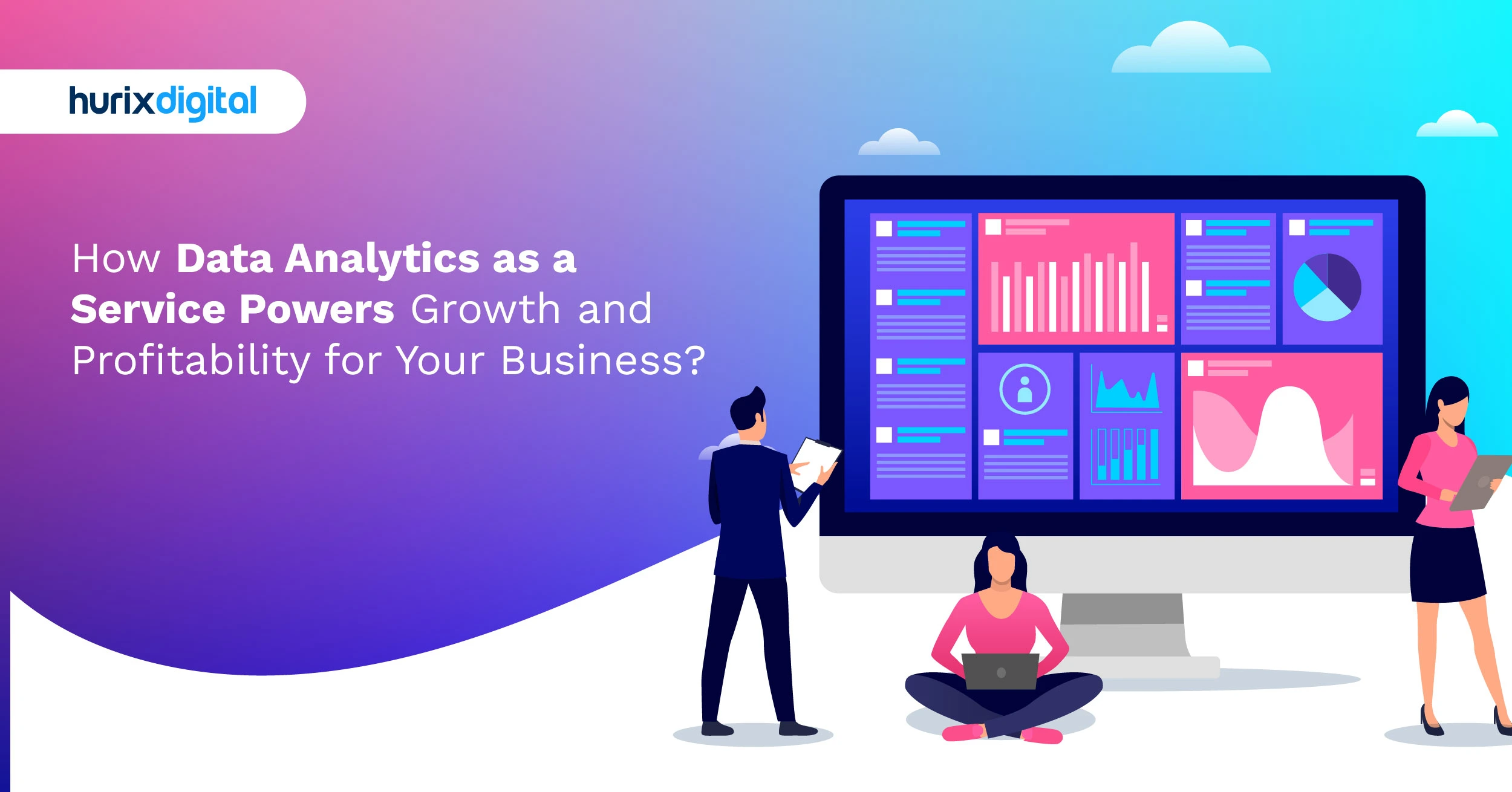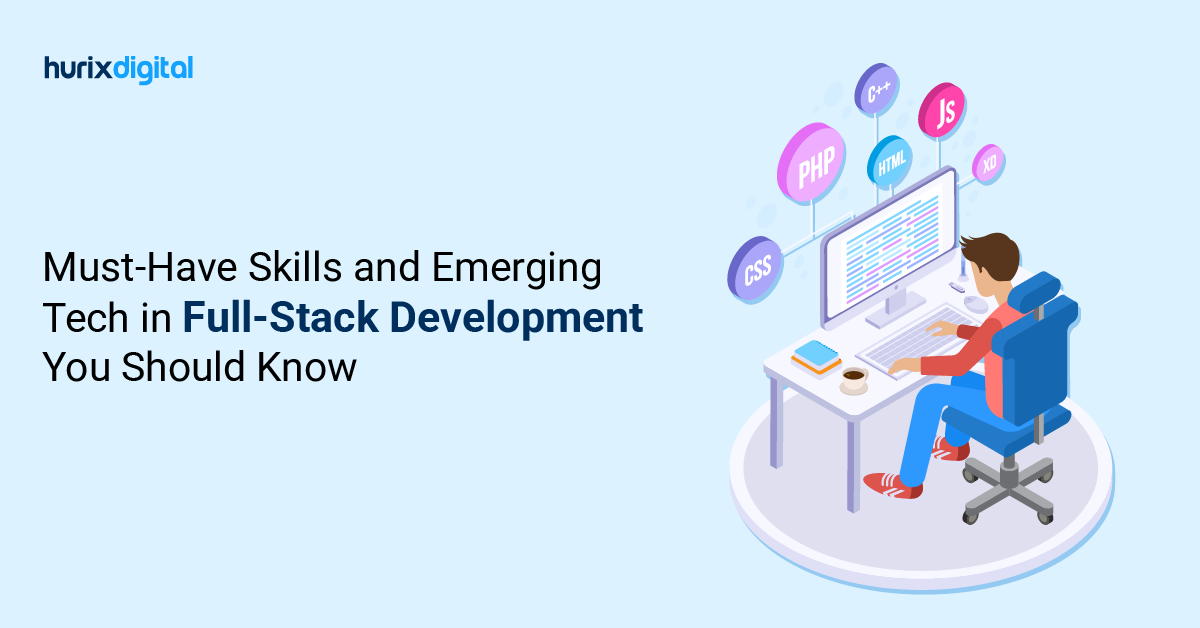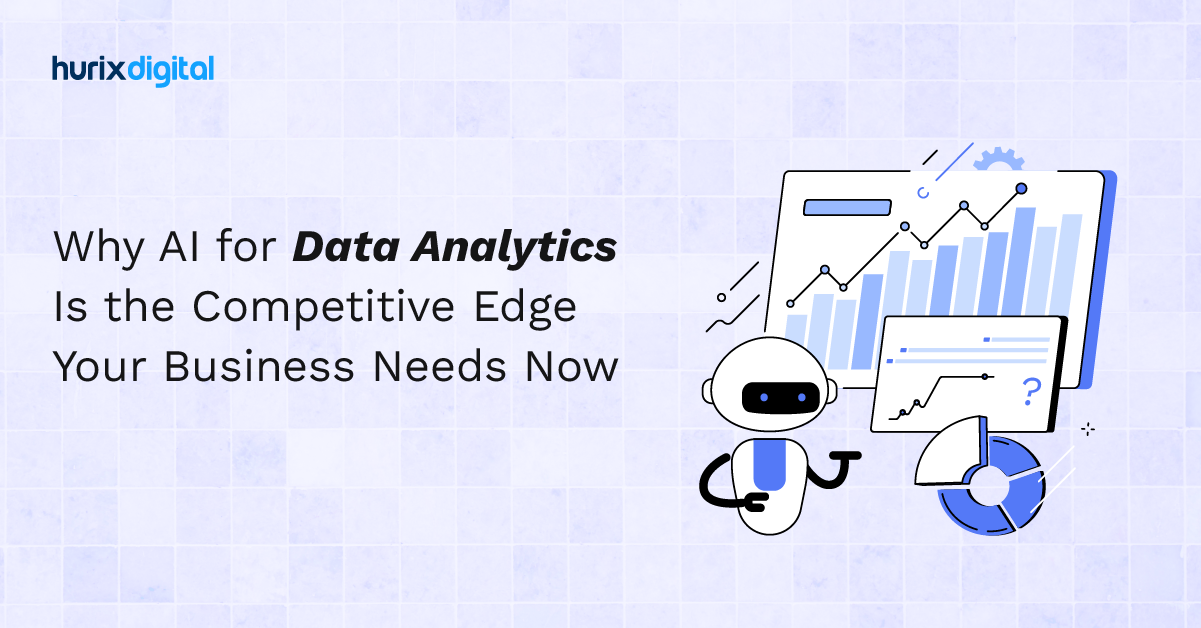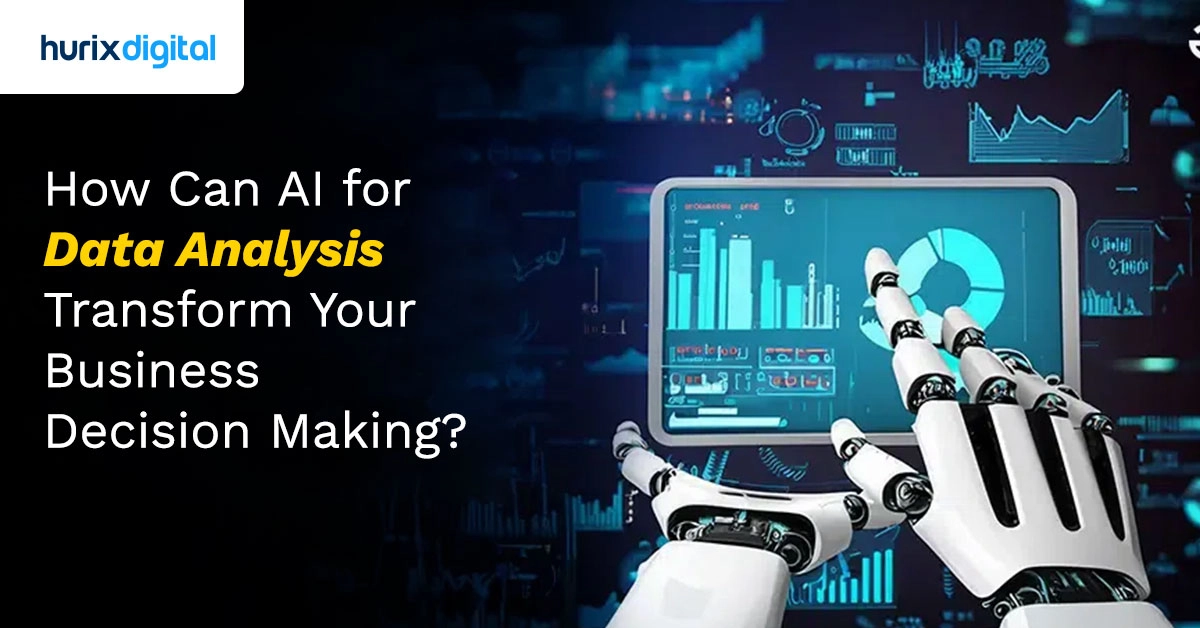
How Can AI for Data Analysis Transform Your Business Decision Making?
Summarize with:
The boardroom goes quiet when someone mentions AI-powered data analysis. Half the room sees dollar signs and efficiency gains. And the other half wonders if their entire analytics infrastructure needs rebuilding from scratch.
Beyond the initial hurdle of data cleanliness, the path forward with AI analysis takes them into trickier territory. And then come big questions about fairness, bias, and the reliability of these AI tools. Can an algorithm truly be impartial when analyzing sensitive organizational data? In terms of confidence and clarity, what exactly is the value of that substantial investment? These questions tend to have complicated answers. But smart leaders know how to shape a successful, responsible approach carefully.
Table of Contents:
- How Does AI Improve Data Analysis Accuracy and Efficiency Today?
- What Are the Biggest Data Quality Challenges for AI Analysis?
- How Can AI Mitigate Bias in Complex Organizational Data Analysis?
- What Is the Tangible ROI of AI Investment for Enterprise Data Analysis?
- How Do We Integrate AI Tools With Our Existing Data Infrastructure?
- What Ethical Considerations Arise With AI-Driven Data Analysis Decisions?
- How Do We Ensure Data Privacy and Security Using AI for Analysis?
- What Skills Are Crucial for Teams Deploying AI in Data Analysis?
- How Can We Build Trust and Explainability in AI Analysis Outcomes?
- What Metrics Define Success for AI-Powered Data Analysis Initiatives?
- Final Thoughts
How Does AI Improve Data Analysis Accuracy and Efficiency Today?
Picture a retail manager scrolling through thick monthly sales charts that took her team almost a month to fill out. By the time the insights reach her desk, market conditions have already shifted. Sound familiar?
AI changes this game entirely, but not in the way most vendors promise. The real improvements come in three flavors that matter to executives.
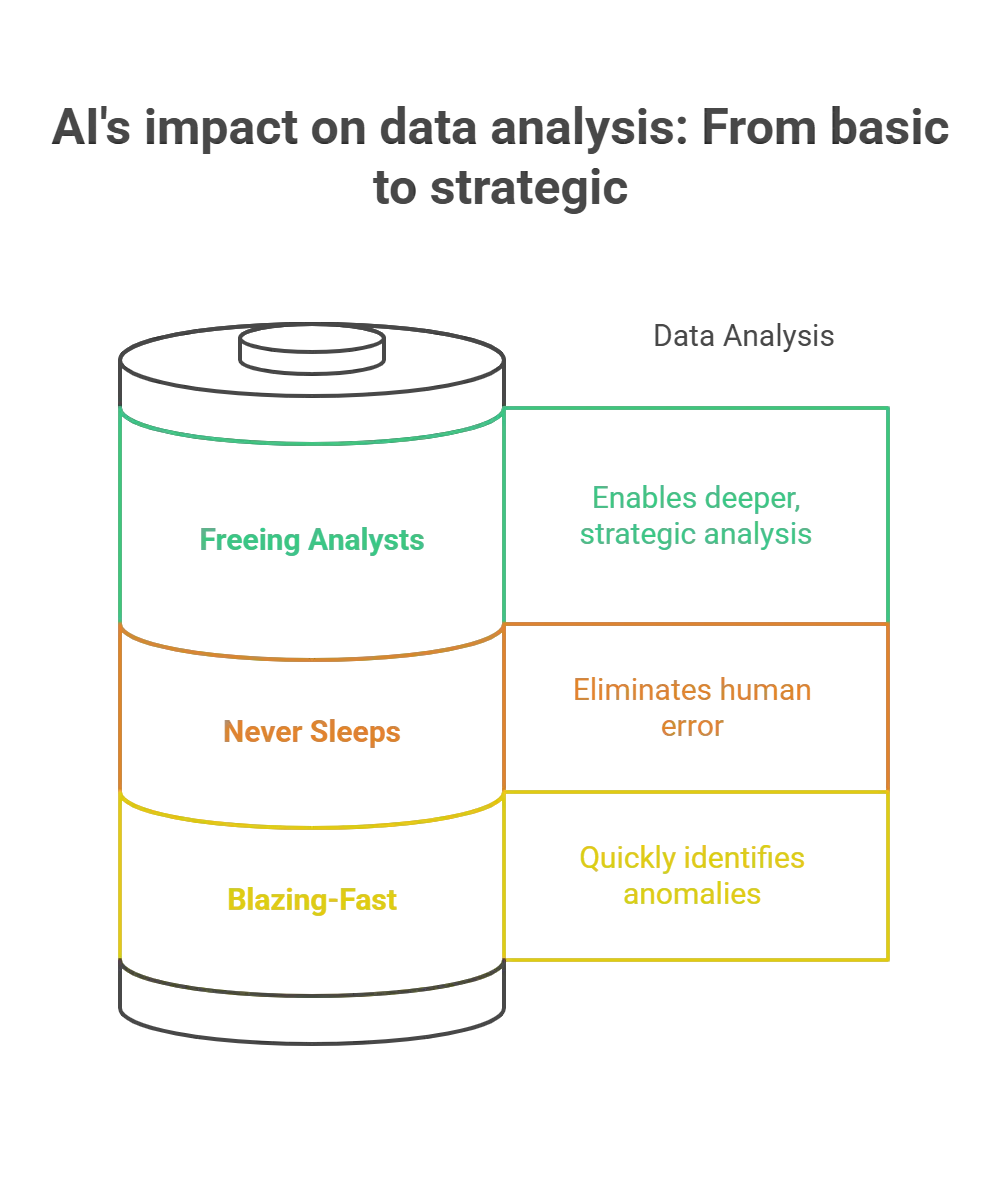
1. Blazing-Fast Pattern Recognition
Humans are incapable of matching the speed at which pattern recognition happens. An AI system can find anomalies in transaction data in milliseconds, which would take an analyst days to do in Excel.
2. Consistency That Never Sleeps
Second, there’s the accuracy paradox. AI doesn’t get tired at 6 PM on Friday. It doesn’t accidentally transpose numbers or skip rows 1,247 through 1,251 because the coffee ran out. When a pharmaceutical company switched to AI-assisted clinical trial analysis, error rates dropped significantly. In other words, that’s what consistency at scale is all about.
3. Freeing Analysts for Strategic Insights
But here’s where executives need to pay attention: efficiency gains go beyond speed. They free analysts to ask better questions. Give it some thought. Your team will have more time to work on insights that really matter if they don’t have to spend as much time cleaning up data. That’s where the real value is. Teams can now spend less time cleaning data and making reports and more time interpreting it strategically.
What Are the Biggest Data Quality Challenges for AI Analysis?
“Garbage in, garbage out” is one of the oldest rules in computing, but AI takes this idea to an uncomfortable level. We need to stress how important it is to have accurate data. One of the prospective clients we were talking with had their shiny new AI system making predictions based on data, where one-fourth of customer records were based on outdated information. The outcome? Let’s just say the board meeting was definitely not a happy place.
The first challenge hits organizations right in the spreadsheets: inconsistent data formats. When marketing uses “Q4-2024” but finance writes “2024Q4” and operations prefers “Oct-Dec 2024,” AI systems throw their digital hands up in confusion. One telecommunications company found eleven ways employees recorded customer status across systems. Eleven!
Missing data creates another headache entirely. Training AI models on incomplete datasets can lead to blind spots that can derail analysis. Then there’s the dirty secret nobody talks about at conferences: duplicate records. When John Smith, J. Smith, and Smith, John all represent the same customer but live in different systems, AI treats them as three people. One of our client discovered they were triple-counting their best customers’ purchases, inflating their loyalty program effectiveness.
Historical data presents its own special nightmare. Company mergers, system migrations, and changing business processes create data archaeologies that would make Indiana Jones nervous. One organization tried analyzing ten-year trends, only to discover that their pre-2019 data used completely different categorization standards. The AI dutifully analyzed apples against oranges, producing insights that looked impressive but meant nothing.
How Can AI Mitigate Bias in Complex Organizational Data Analysis?
Here’s an uncomfortable truth: Every organization’s data contains bias. The question becomes whether leadership acknowledges and addresses bias rather than debating its existence.
A tech company’s AI-driven hiring analysis kept flagging certain resumes as “high potential.” Fantastic, until someone noticed all the top candidates graduated from the same five universities where current executives studied. AI didn’t develop college preferences; it learned from years of unconscious bias in historical hiring patterns.
But if you use AI carefully, it can help you find these hidden biases. Traditional analysis often confirms what analysts expect to see. They subconsciously choose data that supports their ideas. AI, when properly configured, doesn’t care about office politics or protecting anyone’s pet project.
Take the retail executive who swore their Tuesday promotions drove massive foot traffic. Based on AI analysis of point-of-sale data, Tuesday sales actually dropped during promotion periods. Customers simply shifted their planned purchases to days of discount. No human analyst was willing to tell the VP that their signature initiative was eating into revenue. The AI? It just presented facts.
Successful bias mitigation requires three approaches working together:
- First, organizations need diverse teams to review AI outputs, as different perspectives will reveal different blind spots.
- Second, they must regularly audit what factors AI weighs most heavily in its analysis.
- Third, companies should test AI recommendations against multiple scenarios. A red flag arises if changing demographic variables significantly alters outcomes while keeping financial metrics constant.
The goal focuses on making bias visible so leadership can make informed decisions rather than attempting the impossible task of eliminating it.
What Is the Tangible ROI of AI Investment for Enterprise Data Analysis?
CFOs love this question because it cuts through the hype. Let’s talk real numbers, not vendor promises. Yes, return on investment (ROI) calculations for AI get tricky. Reduced analysis time, fewer errors, and faster insights are only part of the story. The transformative value often hides in second-order effects.
Consider the insurance firm that implemented AI for claims analysis. Direct benefit: 60% faster claim processing. Valuable, sure. But the real ROI came from what happened next. Faster processing meant happier customers. Happier customers renewed policies at 15% higher rates. The lifetime value calculation suddenly made that AI investment look like pocket change.
Smart organizations track both hard and soft ROI metrics. Hard metrics include analysis cost per insight, time-to-decision improvements, and error reduction rates. Soft metrics cover employee satisfaction (analysts doing strategic work instead of data janitor duties), competitive advantages from faster market responses, and risk mitigation from better predictive capabilities.
The harsh truth? Not every investment in AI yields a successful outcome. Companies that believe AI is a magic fix and fail to adapt their processes typically lose money. However, companies that carefully integrate AI into their analysis workflows usually see a return on their investment within 12 to 18 months. Additionally, the returns improve as teams become more proficient in utilizing AI. The most effective way to achieve a solid return on investment is to start with something small, prove it succeeds, and then expand on the successful aspects.
How Do We Integrate AI Tools With Our Existing Data Infrastructure?
“We want to use AI, but our data is stuck across nine systems built over the past two decades.”
Sound familiar? Welcome to every enterprise’s integration nightmare. The good news is that you don’t have to start over from scratch.
Smart integration begins with a candid assessment of the current infrastructure. But the temptation to modernize everything simultaneously kills more AI initiatives than any technical challenge. A retail chain learned this after spending a few million dollars on a “complete digital transformation.” Two years later, they’d migrated a quarter of their data and generated zero business value. Meanwhile, their competitor used simple connectors to feed existing data into cloud-based AI tools. Guess who captured market share?
Technical architecture matters, but not how most executives think. The question isn’t “Should we move to the cloud?” or “Do we need a data lake?” It’s “What’s the minimum viable integration that delivers value?” Modern AI tools increasingly handle messy, distributed data.
Here’s what actually works: Start with read-only connections to existing systems. Let AI tools pull data without risking production operations. Use middleware to standardize formats on the fly rather than restructuring databases. Build feedback loops gradually. Let AI insights flow back through existing reporting channels before attempting real-time integration.
What Ethical Considerations Arise With AI-Driven Data Analysis Decisions?
The algorithm recommended denying mortgage applications from specific neighborhoods. Technically correct based on historical data? Yes. Ethically defensible? Absolutely not.
This scenario played out at a major bank, highlighting the minefield executives navigate when AI influences significant decisions. The ethical challenges go far beyond avoiding obvious discrimination.
Consider the healthcare network whose AI identified patients likely to miss appointments. Brilliant for scheduling efficiency. Then someone asked: “What happens to patients the AI flags as unreliable?” Turns out, the system inadvertently created a priority tier system, offering premium appointment slots to “reliable” patients while pushing others to less convenient times. The reliable patients? Generally wealthier with flexible work schedules. The ethics committee had questions.
Transparency creates another thorny issue. When AI denies a loan, flags a resume, or predicts employee turnover, people deserve explanations. But complex neural networks don’t readily explain their reasoning. “The algorithm said so” doesn’t cut it in the boardroom or courtroom.
Another challenge is data consent. Organizations collect information for specific purposes, then AI finds novel uses for that same data. Does the retailer use purchase history for inventory planning? Fine. Using that same data to infer health conditions for insurance partners? That’s a lawsuit waiting to happen.
The competitive pressure makes ethics harder. If competitors use AI to maximize profit regardless of fairness, ethical organizations face real disadvantages. Leading organizations establish AI ethics boards before problems arise. These committees wield real power to veto implementations that cross ethical lines. They go beyond feel-good gatherings to make actual decisions with teeth. They ask tough questions: Who benefits from this analysis? Who might be harmed? How do we explain decisions to affected parties? What would happen if this made headlines?
The most successful approach treats ethics as a feature, not a bug. Organizations building fairness into their AI processes often discover unexpected benefits.
How Do We Ensure Data Privacy and Security Using AI for Analysis?
Privacy and security in AI analysis create unique challenges because AI systems have long memories. Traditional systems process data and move on. AI models absorb patterns from training data that can persist indefinitely.
The first challenge hits during data preparation. There is no limit to how much data AI models can consume. But aggregating information across departments often violates internal access controls. The marketing analyst who couldn’t access financial records suddenly trains an AI on combined datasets. In the rush for comprehensive analysis, decades-old privacy boundaries disappear.
Geographic complexity multiplies these challenges. Data that’s perfectly legal to analyze in one country becomes highly sensitive in another. Smart organizations implement privacy-preserving techniques from day one. Differential privacy protects individuals while maintaining analytical value. Federated learning lets AI train on distributed data without centralizing sensitive information. Security requires equal attention. AI systems become attractive targets because they concentrate analytical capabilities. A compromised AI system can be used to manipulate strategic decisions beyond simply stealing data.
What Skills Are Crucial for Teams Deploying AI in Data Analysis?
We recommend beginning with business translation. The best AI teams include people who speak both machine learning and quarterly earnings calls. They understand why a 3% improvement in prediction accuracy might mean nothing if it fails to address real business problems.
Data storytelling is the next crucial skill. AI generates insights, but humans must communicate them effectively. The analyst who can explain why customer segmentation changed without using terms like “k-means clustering” or “dimensionality reduction” becomes invaluable.
Ethical reasoning can’t be outsourced to philosophers. Every team member needs to recognize when AI recommendations cross ethical lines. The data engineer who flags that training data underrepresents certain populations prevents legal teams from discovering too late.
Finally, systems thinking trumps siloed expertise. AI touches multiple organizational layers, and team members must understand these connections. The model performing brilliantly in testing might crash production systems or violate regulatory requirements. Teams need members who anticipate second-order effects. “What happens when this scales?” becomes more important than “Look how accurate this is!”
How Can We Build Trust and Explainability in AI Analysis Outcomes?
Trust builds through transparency, but not the kind vendors usually promise. Real transparency means admitting what AI can’t do.
Explainability comes in layers, and different stakeholders need different depths. The board wants to know directionally why sales forecasts changed. The finance team needs an understanding of which variables drove predictions. Data scientists require full model architectures. Despite the complexity of explanations, smart organizations create hierarchies of explanations for executives and detailed breakdowns for implementation staff. Confidence scores matter more than most organizations realize. Users trust AI that admits uncertainty. “85% confident this customer will churn” beats “This customer will churn” every time.
Regular audits create ongoing trust. Smart organizations schedule quarterly reviews where AI predictions get compared against actual outcomes. Discrepancies get investigated and explained.
Making AI accessible is the key to explaining it. Use visualizations showing which factors most influenced decisions. Provide concrete examples comparing similar cases with different outcomes. Create feedback mechanisms where users can challenge AI conclusions and see responses.
What Metrics Define Success for AI-Powered Data Analysis Initiatives?
When you really boil it down, defining success for AI-powered data analysis initiatives often misses the point if you’re just looking at algorithms and dashboards. Getting caught up in technical metrics, such as accuracy scores and processing speed, is easy. But a truly successful AI analysis project moves beyond the zeroes and ones.
One key metric is quite simply: adoption. Did anyone actually use the insights? A brilliant model spitting out perfectly accurate predictions is useless if the business teams don’t trust it, don’t understand it, or simply prefer their old spreadsheets. It’s about more than just building it; it’s about making it fit into the daily rhythm of decision-making. So, there was this project where the AI could predict customer churn with frightening precision, but the sales team felt it was a “black box.” They simply didn’t buy into its recommendations. We had to backtrack and spend weeks building explainability layers, showing why the AI made certain predictions, not just what it predicted.
Then there’s the “aha!” moment. Is the AI truly revealing something new, or is it merely confirming what a competent analyst could deduce with sufficient time? The real triumph often lies in discovering hidden patterns, connections, or risks that human intuition, or even traditional reporting, cannot find. It would be almost impossible for a person to find a small, growing pattern of fraud across transactions that don’t seem to be connected.
Finally, think about the time you have. For both the machine and the person. Is the AI doing the boring, repetitive work like preparing data and writing reports, freeing up human analysts to do more “valuable” work? To think more strategically, to think about “what if” situations, and to use creative ways to solve problems. If our best data experts are still spending half of their week addressing data quality issues instead of acting on insights, then the AI hasn’t worked as intended.
Using AI in data analysis goes beyond shiny new gadgets; it starts with the right questions. When top leaders focus on getting better accuracy, higher ROI, and fair results, they face bias and ethics head-on. Thoughtful planning is key. By building trust and developing the right skills within the team, organizations can leverage AI as a powerful tool that drives better decisions.
Final Thoughts
In this blog, we explored how AI enhances data analysis—spotting quick patterns, reducing errors, and freeing up teams for more in-depth work. We’ve also covered the challenging aspects, such as resolving data issues, identifying biases, and handling ethics with care.
At Hurix Digital, we bring this to life in education and training. Think of us helping you use AI to analyze learning data, personalize courses, and predict student success without starting from zero. Reach out today to see how we can team up and boost your organization’s learning edge.
Summarize with:

Vice President & SBU Head –
Delivery at Hurix Technology, based in Mumbai. With extensive experience leading delivery and technology teams, he excels at scaling operations, optimizing workflows, and ensuring top-tier service quality. Ravi drives cross-functional collaboration to deliver robust digital learning solutions and client satisfaction
 Upcoming Masterclass | Build an Army of Brand Evangelists using Training & Development | November 20th, 8:30 AM PDT | 11:30 AM EDT | 10:00 PM IST
Upcoming Masterclass | Build an Army of Brand Evangelists using Training & Development | November 20th, 8:30 AM PDT | 11:30 AM EDT | 10:00 PM IST

